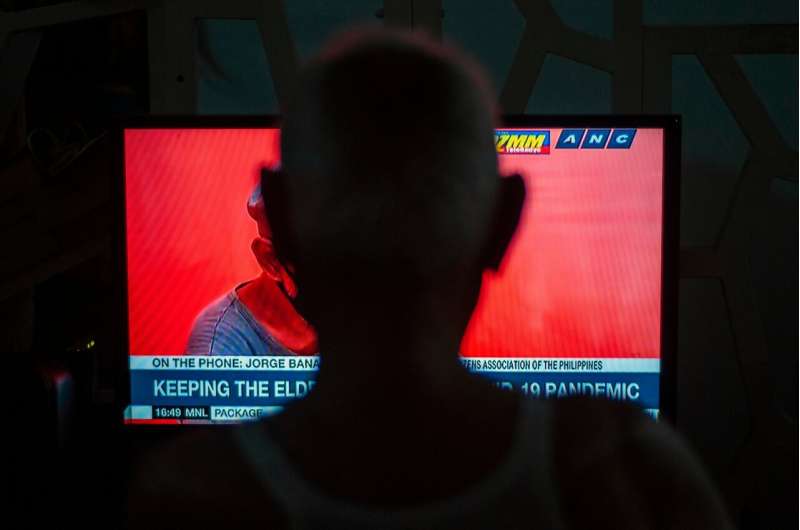This article has been reviewed according to Science X's editorial process and policies. Editors have highlighted the following attributes while ensuring the content's credibility:
fact-checked
peer-reviewed publication
trusted source
proofread
How reports of community firearm violence are framed on local television news in Philadelphia

Two new studies published in Preventive Medicine Reports and BMC Public Health led by corresponding author Jessica H. Beard, MD, MPH, FACS, of Temple University, more closely examine how reports of community firearm violence are framed on local television news in Philadelphia and the downstream effects of that coverage on the general public's perception of the issue.
In Preventive Medicine Reports, Dr. Beard and the research team set out to better identify the systematic differences between the characteristics of victims of community firearm violence and the events covered on local television news compared with all shootings in the city of Philadelphia.
The team compiled a sample of news clips covering shootings in Philadelphia from all four local television stations on two randomly selected days per month from January to June 2021 for a total of 154 clips. These clips were then coded to determine demographic and geographic information and were matched with corresponding shootings in the Philadelphia Police Department database.
The team compared the characteristics of victims and event locations presented in local television news clips with the overall characteristics of shootings in Philadelphia during that time period and found:
- Victims whose shootings were covered on local television news were younger, more likely to be children and were more likely to be injured in a mass shooting.
- Shootings featured on local television news were more likely to occur in areas with a higher median household income, lower rates of socioeconomic inequality and lower rates of racialized economic segregation.
In BMC Public Health, Dr. Beard and the research team approached the depiction of community firearm violence on local television news in Philadelphia from a broader lens and sought to identify and measure both public health elements and harmful content elements in reporting.
Public health elements include data/trends, discussion of root causes and solutions, and public health narrators and visuals.
Harmful content elements were identified by firearm-injured people in a previous study by the research team as:
- Visual of crime scene
- Not a follow-up story
- Only narrator is law enforcement
- Number of gunshot wounds
- Clinical condition of firearm-injured person
- Relationship between firearm-injured person and shooter
- Name of treating hospital
- Video or audio of shooting
The team once again compiled a sample of news clips covering shootings from all four local Philadelphia television stations—this time of Philadelphia-area and national incidents—on two randomly selected days per month from January-June 2021 for a total of 192 clips. Of those:
- 68.2% were local stories of firearm violence in Philadelphia.
- 79.2% used episodic framing—focusing on a single incident—versus thematic framing, which would provide broader social and structural context.
- Law enforcement officials were the primary source of information in 50.5% of segments.
- No segments contained a health or public health professional or firearm-injured person.
- 79.2% of stories included police imagery.
- 84.4% of the clips contained at least one harmful content element.
- Public health frame elements were missing from most clips.
- Thematic stories were more likely to contain public health frame elements and less likely to have harmful content but were not longer than episodic stories.
"Our findings in Preventive Medicine Reports reveal that segments about community firearm violence on local television news are neither demographically nor geographically representative of both who—and where—is most disproportionally impacted in Philadelphia," said Dr. Beard.
"Beyond that, our BMC Public Health study demonstrates that these segments also frequently contain harmful elements and lack the context necessary for a deeper understanding of the issue."
"These news stories may be the only window into community firearm violence that the general public has, and they often are not getting a complete picture, but instead, one that research has indicated can lead audiences to blame victims, reinforce racist stereotypes, and undermine effective public health responses."
"Strides are being made in journalism to rectify these concerns," Dr. Beard added. "In the past, guidelines were developed in cases of suicide, mass shootings, sexual assault, abuse, and crime involving minors, and newsroom practices were revised. Fortunately, new guidelines are being developed for reporting on community firearm violence."
"PCGVR, for instance, has developed a toolkit in collaboration with Frameworks for minimizing harmful reporting on community firearm violence, and our research will help build a foundation for further efforts in the future."
More information: Jessica H. Beard et al, Systematic disparities in reporting on community firearm violence on local television news in Philadelphia, PA, USA, Preventive Medicine Reports (2024). DOI: 10.1016/j.pmedr.2024.102739
Jessica H. Beard et al, Public health framing of firearm violence on local television news in Philadelphia, PA, USA: a quantitative content analysis, BMC Public Health (2024). DOI: 10.1186/s12889-024-18718-0
Journal information: BMC Public Health
Provided by Temple University



















